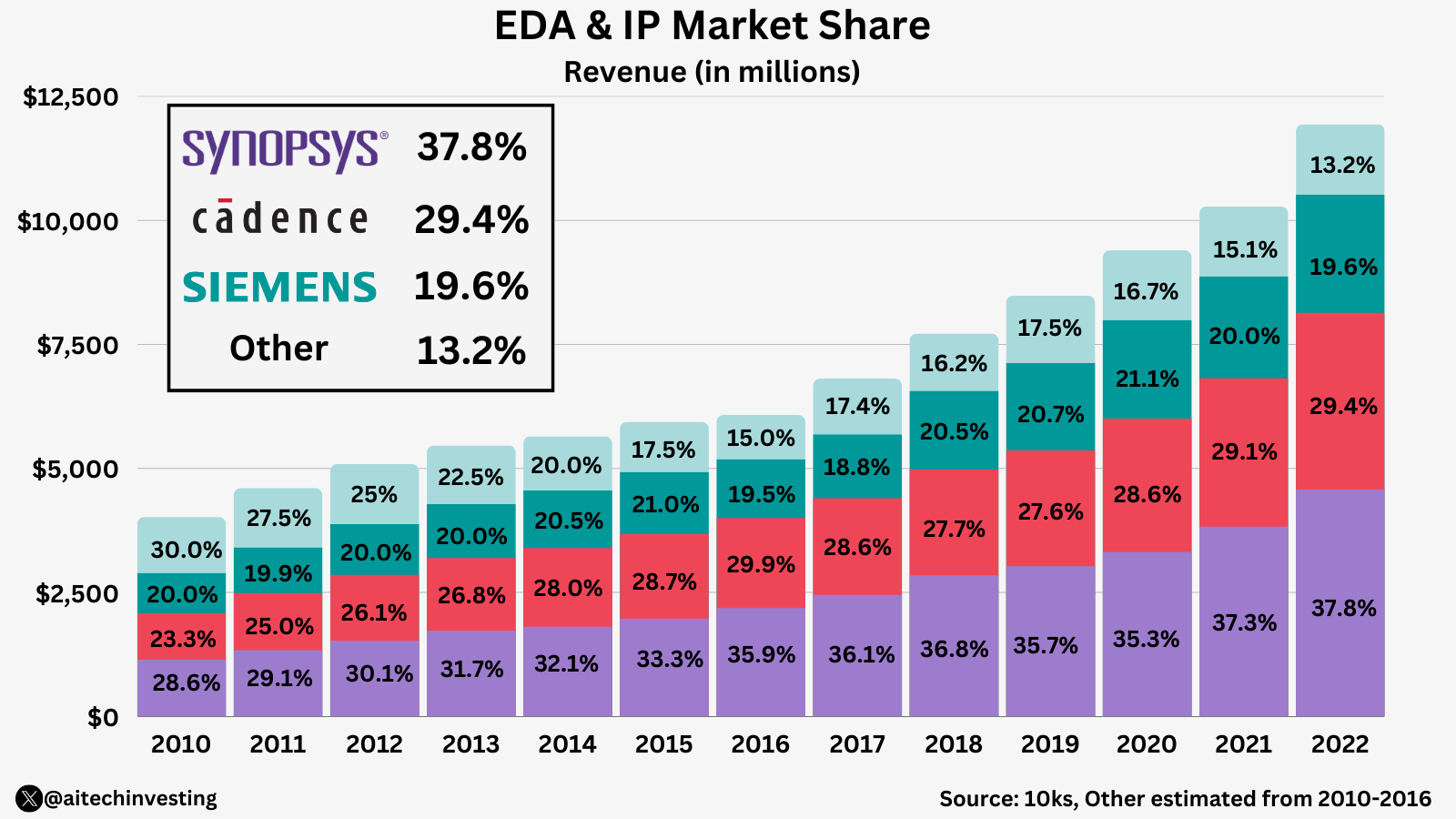Introduction:
In the intricate realm of semiconductor design, Electronic Design Automation (EDA) tools play a pivotal role in shaping the future of technology.
As the backbone of chip design, companies rely on EDA tools to navigate the complexities of the design process, ensuring that each chip meets the highest standards before heading to the foundries for manufacturing.
Join Our WhatsApp News for updated information on semiconductors & AI
The Oligopoly of EDA Giants:
Leading the EDA market are giants like Synopsys, Cadence Design Systems, and Siemens EDA (formerly Mentor Graphics), forming an oligopoly.
These industry leaders offer crucial software for conceptualizing, designing, and verifying chips, reducing the risk of costly errors. The market is consolidating further due to the growing complexity of chip designs, forcing smaller players out.

Read More:
Market Dynamics and Growth:
Over the last 12 years, the EDA market has experienced a robust 9.6% Compound Annual Growth Rate (CAGR). This growth has accelerated to an impressive 12.2% CAGR in the last five years.
Two key driving forces are escalating complexity of chip designs and the rising number of fabless firms.
1. Increasing Chip Complexity:
The heart of the EDA market’s growth lies in the escalating complexity of chip designs. As technological advancements push the boundaries of what chips can achieve, design tools become increasingly vital.
The costs associated with chip manufacturing errors amplify, necessitating flawless design and validation processes. A recent example of 2 nm chip costing upon 725 million dollars.
Artificial Intelligence (AI) is emerging as a crucial player in optimizing chip designs and preventing flaws.
However, even industry leaders are grappling to keep pace with the breakneck speed of semiconductor complexity, leading to a continued consolidation of the EDA market.
Since the 1990s, a persistent challenge has haunted the semiconductor industry: the ever-growing complexity of semiconductors surpassing the capabilities of design tools.
Notably, the design tools’ complexity is advancing faster than the verification tools can keep up with. This is prompting ongoing consolidation as smaller EDA players struggle to meet the demands imposed by rapidly evolving chip designs.
Read More: 2nm Chip Design Costs $725 Million: Can the Industry Afford It?
2. The Rise of Fabless Firms:
A notable trend in the semiconductor industry is the rise of fabless firms. Major players like Apple, Amazon, Google, Microsoft, Tesla, IBM, Meta, Ford, and GM are coming up with new designs.
These companies design their own chips but don’t own manufacturing facilities, allowing them to optimize processes, control their supply chain, and gain a competitive edge.
In this scenario, Synopsys and Cadence are key players, serving as gatekeepers by providing essential tools for chip designers. They play a vital role in facilitating the design phase and collaborating with foundries to streamline manufacturing.
Read More: Meta Embraces RISC-V for Videos, Inference Accelerators and Training Chips
Conclusion:
The EDA market is closely linked to the advancing complexity of semiconductors, with Synopsys, Cadence, and Siemens EDA serving as crucial pillars driving innovation.
In the face of designing more intricate chips, the industry is embracing the vital partnership between EDA tools and AI.
Fabless firms are reshaping the semiconductor landscape, presenting both unprecedented challenges and opportunities for the future.
Synopsys and Cadence lead this transformative journey, positioned at the forefront of technological advancements in chip design.




